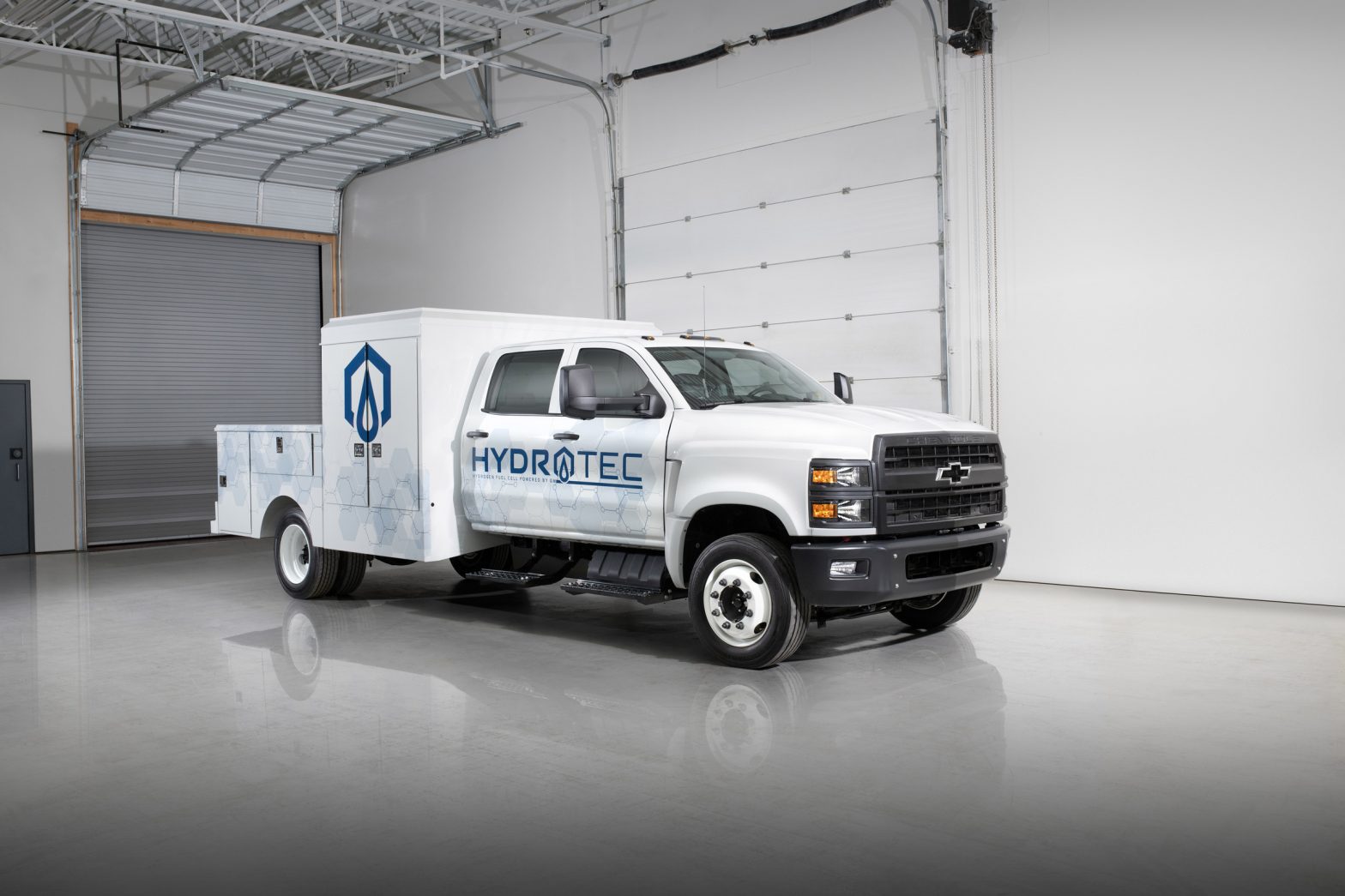/
The trucks look like Chevy Silverado 5500 MDs but will run on the most abundant element in the universe.
Share this story
:format(webp)/cdn.vox-cdn.com/uploads/chorus_asset/file/25318825/_N857130.png)
General Motors will release a fleet of medium-duty trucks that run on hydrogen fuel cells as part of a pilot project sponsored by the US Department of Energy. The goal is to prove out the capabilities of hydrogen, the most abundant element in the universe, as a viable alternative to diesel vehicles.
“We will design, engineer, and develop a fleet of hydrogen fuel-cell medium-duty trucks,” said Jacob Lozier, project lead at GM, “to demonstrate how the capability and strength of our fuel cells can help real-world fleet customers.”
The trucks’ development will receive funds from DOE’s SuperTruck program, which aims to reduce carbon emissions among heavy- and medium-duty vehicles. The total project will cost $65 million, with $26 million coming from DOE, and GM and its partners providing the rest.
The trucks will share an exterior design with today’s Chevy Silverado 5500 medium-duty trucks. But under the hood, they will run on hydrogen fuel cells developed by GM’s Hydrotec division. The automaker is working on a number of other hydrogen-related projects, including mobile power generators, cement mixers, and heavy-duty vehicles. GM also has a joint venture with Honda to develop hydrogen fuel cells for a variety of products.
GM will deliver the fuel cell trucks to Southern Company, an Atlanta-based gas and electricity utility, for use as shop vehicles for its worksites. The automaker also envisions the trucks being used for farming operations and municipal services. GM will also work with Nel ASA, using the Norwegian company’s PEM Electrolyzer in an effort to create hydrogen more sustainably.
Hydrogen fuel cells use compressed hydrogen as their fuel, releasing water vapor as its only emission. A number of automakers have recently seized on the technology for its advantages in the development of heavy-duty vehicles and mobile power generators — and as a way to further transition away from polluting gas-powered vehicles and meet their own climate goals.
Hydrogen’s energy content by volume is low, which makes storing hydrogen a challenge because it requires high pressures, low temperatures, or chemical processes to be stored compactly. Overcoming this challenge is important for light-duty vehicles because they often have limited sizes and weight capacities for fuel storage.
The Biden administration recently proposed new tax guidelines aimed at making it cheaper to produce hydrogen as a less polluting alternative to fossil fuels. The problem, though, is that most hydrogen is made with the help of fossil fuels, mostly through a process called steam methane reforming that produces carbon dioxide emissions. Methane is an even more powerful greenhouse gas than CO2 and routinely escapes along the supply chain, from production to final use.
But GM says it’s committed to cleaner methods of hydrogen production when they are available. “Our approach right now is to be kind of agnostic what the sources are,” said Charles Freese, executive director of GM’s Hydrotec division.
The main hurdle for hydrogen is the near-total absence of refueling infrastructure in the US. There are only 55 hydrogen stations in California, according to Hydrogen Fuel Cell Partnership — which is basically the sum total for the whole country. And refueling can be expensive, with the Department of Energy estimating the costs as upward of $90 per vehicle.
“We know how to make hydrogen fuel cells,” Freese said, “but demonstrating it as part of an ecosystem where you’re starting to balance the supply and fueling of hydrogen along with the use and application of the trucks. Those are all elements of what we’re going to demonstrate with this fleet.”
